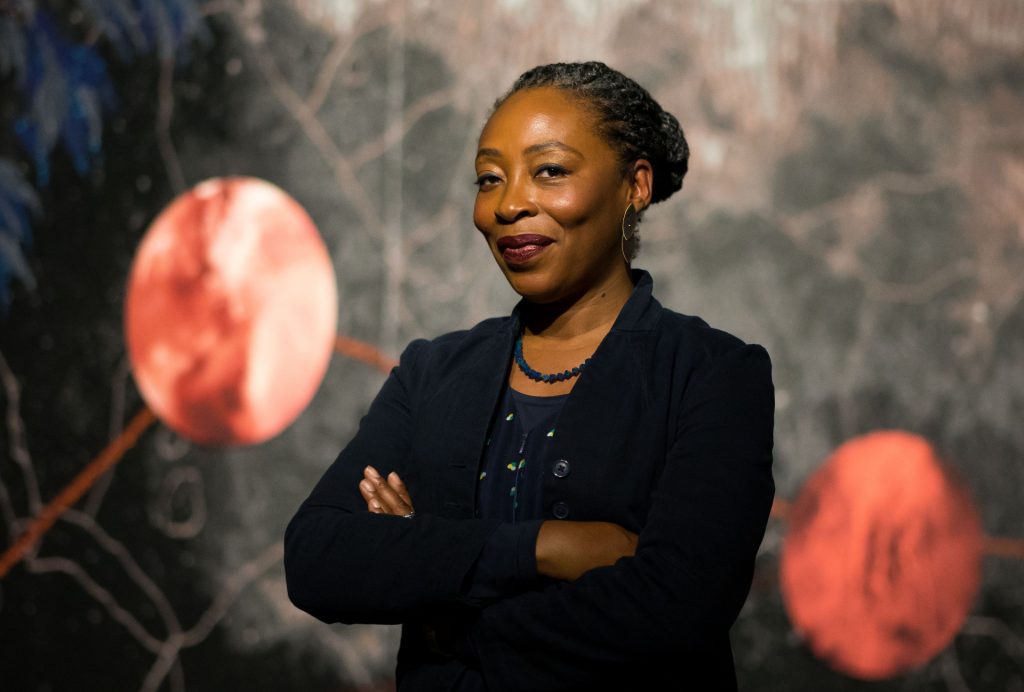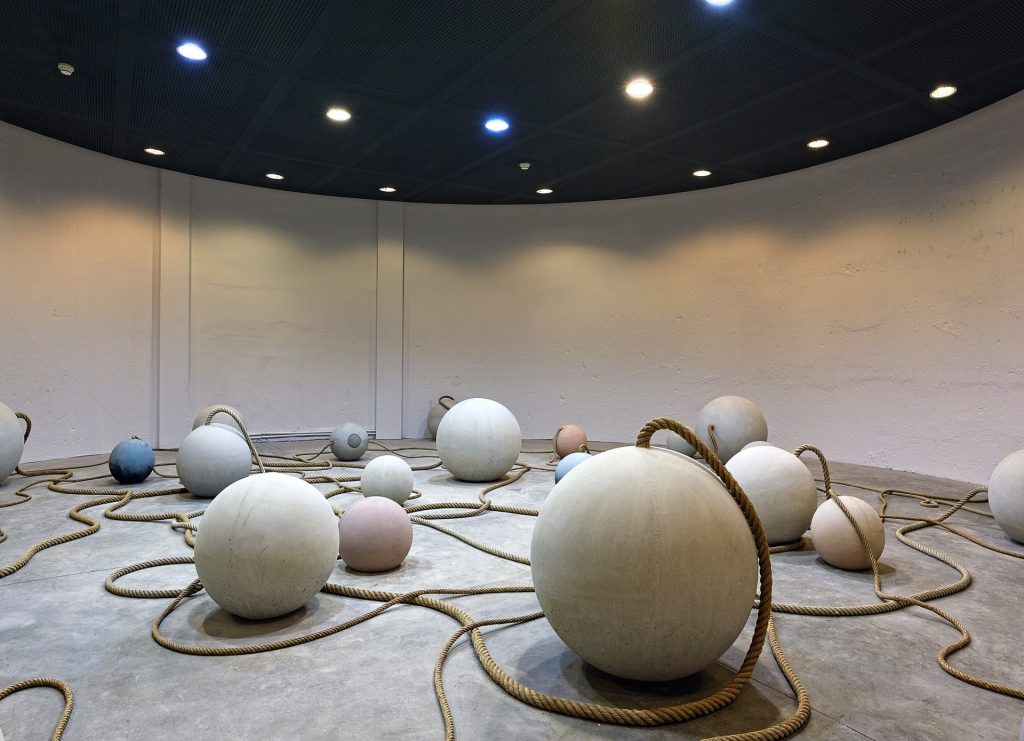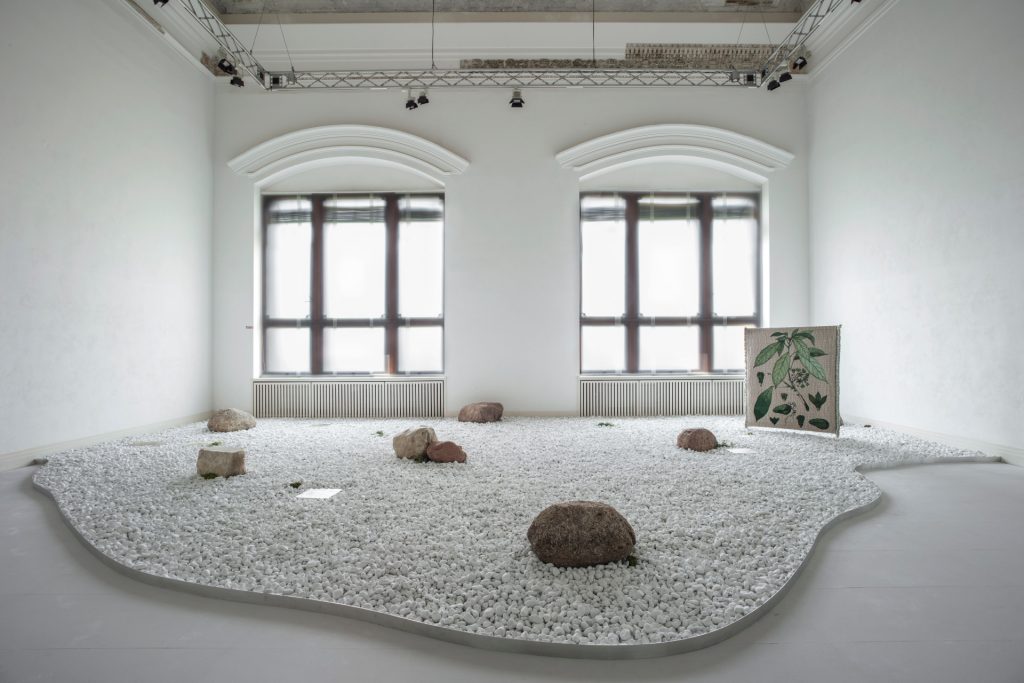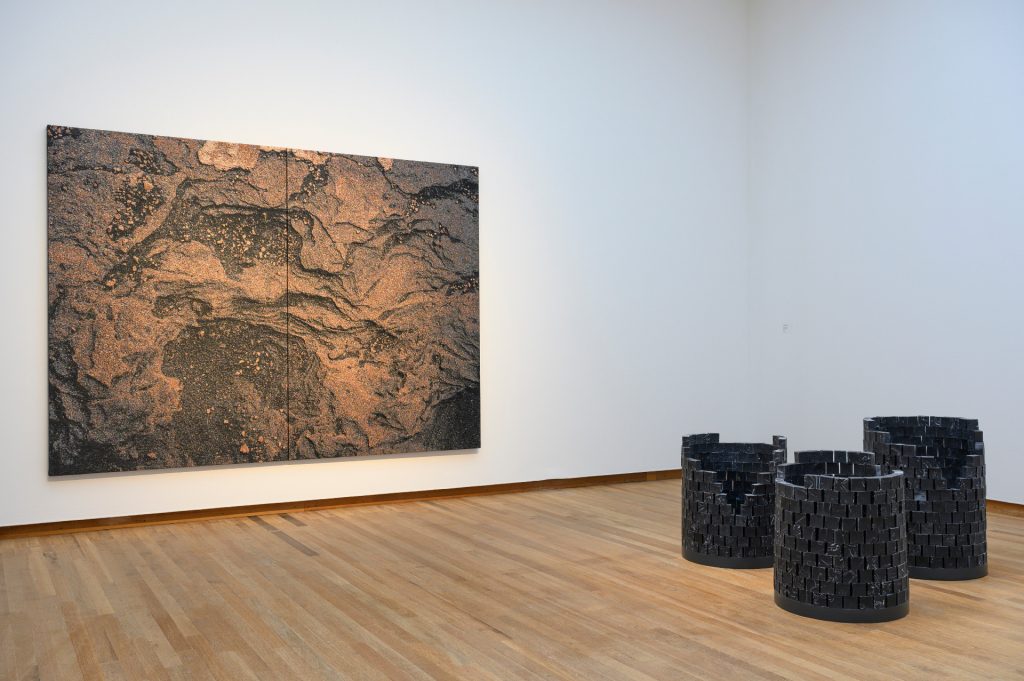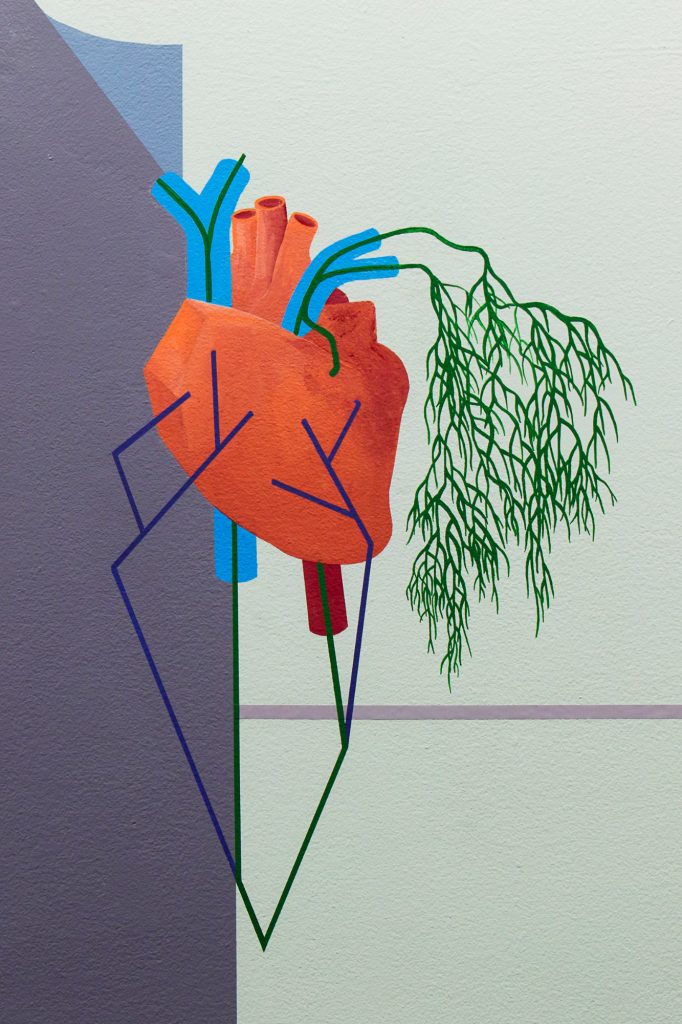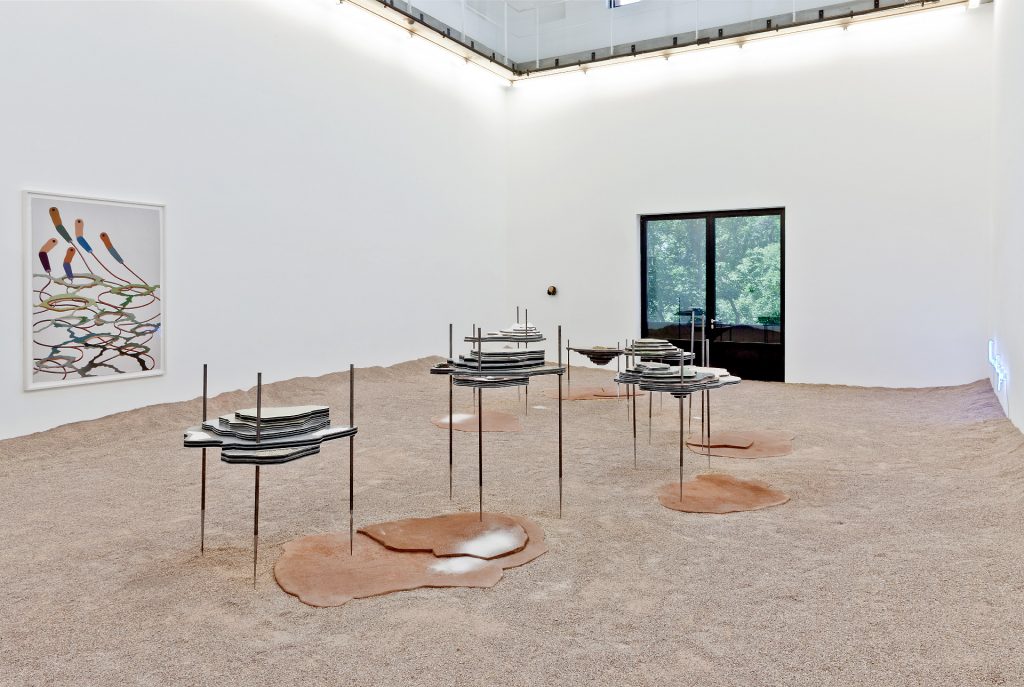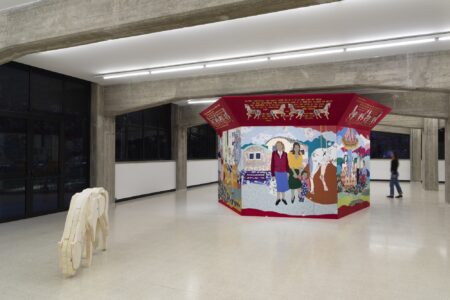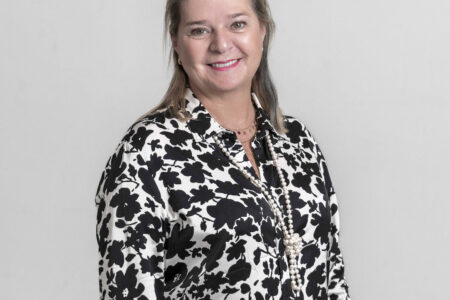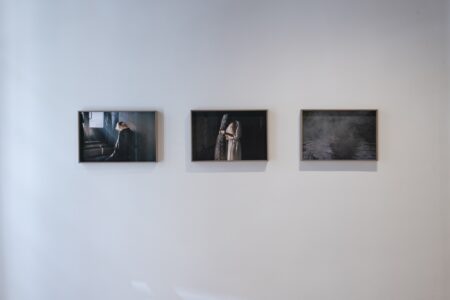Otobong Nkanga – The Flow of Life
The Nigerian-born, multidisciplinary artist Otobong Nkanga, brings an open mind and positive energy to her practice that seeks to build a framework for a better future. Her awareness and sensitivity towards environmental and social issues is the essence of her work.
Incorporating various media including drawing, poetry, photography, installation, video, and performance, Otobong Nkanga closely examines the earth, land, plants and how materials remain and leave traces in a post-colonial era, and how this affects our life and survival. TLmag spoke to the artist for its A/W 2020 issue: Precious: A Geology of Being
TLmag: You were the 2019 In House: Artist in Residence at the Gropius Bau, an experience which concluded with your solo exhibition, “There’s no Such Thing as Solid Ground.” How did this residency develop? What was involved?
Otobong Nkanga: I spent much of the year expanding on my project Carved to Flow, that was originally exhibited as part of documenta 14 in Athens. For that project, I produced black marble soaps in the city using materials sourced from the Mediterranean, the Middle East, and Africa. The residency in Berlin gave me the opportunity to connect with other artists and practitioners and to further expand on this project, which look at earth, soils, oils and locality.
TLmag: How does that project connect to your work, Taste of a Stone, which was part of the exhibition “Acts at the Crossroads” that was on view at Zeitz Mocaa in Cape Town in 2019 and curated by Koyo Kouoh?
O.N.: Koyo Kouah commissioned the artwork Taste of a Stone, which was first shown in 2010 at the Kunsthal Charlottenborg in Copenhagen, Denmark. It consisted of two rooms installed with stones and another with black manganese, onyx, pebbles and plants. This interactive “in situ” installation was again developed in 2019 into different iterations at Sharjah Biennial, the Stedelijk Museum in Schiedam, and then in Zeitz Mocaa. It has been evolving constantly and shifting according to space, location and local materials. It has become something that really connects to the local community, offering a space where the viewers’ own voices could appropriate, experience and expand on it relative to their place. It was also shown at Nottingham Contemporary in the UK where we collaborated with interdisciplinary practitioners to source local plants and stones. In Berlin it made sense that the first room of the exhibition had to be Taste of a Stone, to build it up and to rebuild that space that has been destroyed during the Second World War. My intervention speaks about those fragments, reminiscence of that space’s lifespan.
TLmag: Our theme for this issue is “Precious: A Geology of Being”. How would you interpret this in your own words?
O.N.: Precious connects me to what happens inside the body, in relation to geology, sediments, minerals, multiple layers… strata, magnesium, iron, zinc, … formed apart from this planet and which connect us to our bodies incorporating the same elements which allow us to live and survive. The similarities between living and non-living beings, even though of different forms, allow us to live and are precious. If we do not care for, and are not aware of these connections, that is where things go wrong and lose their meaning of preciousness and start entering in the grid of extinction, of not nurturing each other. Life forms are precious and meaningful and they should be given to feed the next generation.
TLmag: You are a multi/inter-disciplinary artist who questions environmental issues, and nature and humanity as a whole, with its societal disorders, fears and tensions. How do you combine poetry with visual art and performance? For example at your solo show, “From Where I Stand”, at Tate St Ives last year?
O.N.: I do not separate poetry from my artworks. They work together. The titles of my work and the writing around it are not academic but more intuitive and connected to my drawings. My issue is language and how it separates or unites. Since I play with English, it is not that rich enough to be able to expand on other life forms. If we are thinking beyond the present world to connect it to emotions and the universe, it is not obviously easy to me. I sometimes have to invent words to express myself. Poetry allows the expansion of thoughts and reflection, such as in a work like In Counterflow, in which the stage corresponds to a poem which opens up to new horizons. All media are intertwined.
TLmag: Process and materiality are strongly connected to allegories in your storytelling and are intertwined to highlight our decay and human vestiges versus the rarefication of raw materials. What is really precious nowadays? How can we save it? And how can we create more added value by being more engaged with making?
O.N.: Since 2017, Carved to Flow has become more concrete as an artwork and as an ongoing enterprise by looking at past works on extraction, excavations, exploitation of land and labour. This connection to the social and economic landscapes has been very important for me, and the soap in Carved to Flow has been a sculptural element that engages with the real world – both worlds of destruction vs. worlds nourishing people. I went further, trying to understand how to live in a place, and to cohabit with a place, respect and take care of it. Many questions arose: How to extract? How do you replace? How do you take care? I definitively try to see how art can reflect and repair the world. The soap supports the project in connection with other institutions and networks. I also just opened an art space in Athens and started podcasts to have discussions with people around the world to discuss solutions to repair the world.
TLmag: Do you use objects both in connection with a ritualistic approach as with your exhibition, “Crumbling Through Powdery Air”, as well as elements of choreography that interact with the human body?
O.N.: Society is so choreographed that we need more freedom. So many things are pre-defined, even in a forest or in a jungle. This is what it means to have a frame. When we think about gestures and materials, it is the choreography of them which allow us to melt and to function or it breaks apart and fractures. The choreography of life and nonlife forms is happening because they need to exist. Some things are improvised and can come out from experiments and failures. From this set of gestures, you build different ways to express yourself. It is a combination of multiple worlds.
TLmag: Finally, what is the most precious thing in (your) life? How do you value it?
O.N.: Everything is precious: time, people, moments. There are also multiple ways to combine all these elements. I believe in the alchemy of life and things.
@otobongnkanga
@mendeswooddm
mendeswoodsdm.com
